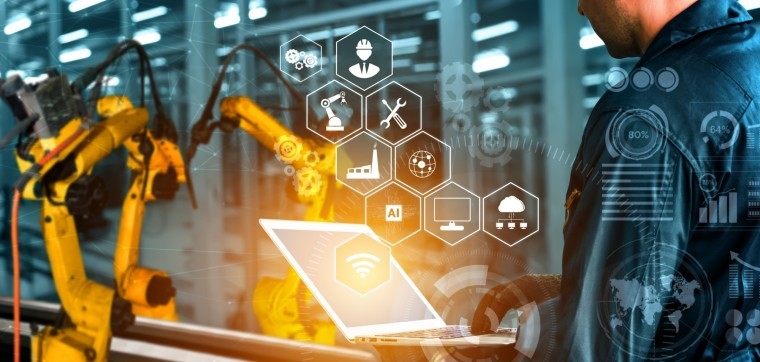In the complex landscape of modern business, industrial companies are under constant pressure to optimize their operations, reduce costs, and meet increasingly stringent quality and safety standards. To accomplish these goals, they must swiftly embrace digital technologies that enable smart operations, products, and supply chains. To achieve this, they need to rapidly adopt and apply digital technologies to perform smart operations, products, and supply chains and meet today's increasingly pressing environmental and social demands, such as reducing carbon emissions, promoting sustainable practices, and improving worker safety. Industrial players are leveraging concepts like digital transformation, Industry 4.0, IoT, IT/OT convergence, AI, and digital real estate and fostering a digital-first culture to navigate these challenges.
From early adopters to mainstream adoption
For a long time, IIoT technology was the playground of early adopters. However, 2023 marks a turning point as both large enterprises and smaller organizations make substantial investments to transform their operations, supply chains, and products. Here are some key trends illustrating the shift towards the mainstream:
- 65% of organizations are now executing an IoT strategy.
- IIoT projects today have a 14% higher success rate than five years ago.
- Projects have a median break-even time of 20 months, compared to 24 months five years ago.
- Fewer organizations report the need to develop an upfront business case.
- The challenges relating to budget availability, project complexity, and data management have diminished by approximately 50%.
As industries cross the gap between early adopters (those who started their IIoT development more than ten years ago) and the early majority (those who began the process in the last few years), several changes can be observed:
IIoT projects are becoming more successful, with 43% of professionals reporting that recent projects exceeded their expectations. This is a notable increase compared to only 38% for older projects. The success factors include enhanced operational efficiency, better asset utilization, reduced downtime, improved product quality, and more resilient supply chains.
The median time to achieve a return on investment (ROI) for IIoT projects has decreased by four months for projects completed in the last two years. This 17% reduction is attributed to streamlined initial project phases, shorter decision-making processes, and increased confidence in IIoT technology and the time required to conceptualize, discuss, debate, and articulate a business concept decreased from eight to three months. The decision-making process to buy or build IIoT technology, or a combination of the two, decreased from six to three months.
- Reduced Emphasis on Detailed Business Plans
While ROI calculations remain essential, the need for a detailed business plan is diminishing. This shift reflects growing confidence in the IIoT ecosystem, with 68% considering it necessary in the past compared to 58% today.
The buy approach for IIoT solutions is rising as IIoT adoption becomes mainstream. End-users are increasingly opting for complete, plug-and-play solutions with minimal integration effort. Leading IoT providers are focusing on offering comprehensive solutions, which is likely to drive further growth in this direction.
- Less Implementation Challenges
Implementing IIoT projects has become less challenging, with only 22% of recent project respondents reporting implementation issues, compared to 52% for older projects. Budget constraints have also reduced from 29% to 16%. However, new challenges have emerged, particularly related to skill gaps, which require additional investments in training and collaboration with partners.
Choosing the Right Path Forward
Whether your industrial company is an early adopter or part of the early majority, the IIoT's evolution provides several opportunities. Partnering with trusted solution providers, such as Noventiq, offers invaluable expertise and guidance whether you choose build, buy- and integrate or integrate approach. With over a decade of experience and a global expertise, Noventiq can help you navigate the complex IIoT landscape and find the best solutions for your organization's needs.
[1] The three approaches to IIoT projects, according to Microsoft:
Build approach: The end-user builds the majority of the tech stack for the IoT solution (either by themselves or with the help of an external services company). Infrastructure components may be bought.
Buy-and-integrate approach: The end-user buys individual platform components or a partial application for the IoT solution and integrates it (either by themselves or with the help of an external services company).
Buy approach: The end-user buys the entire IoT solution which is plug-and-play with very minor integration effort required.









